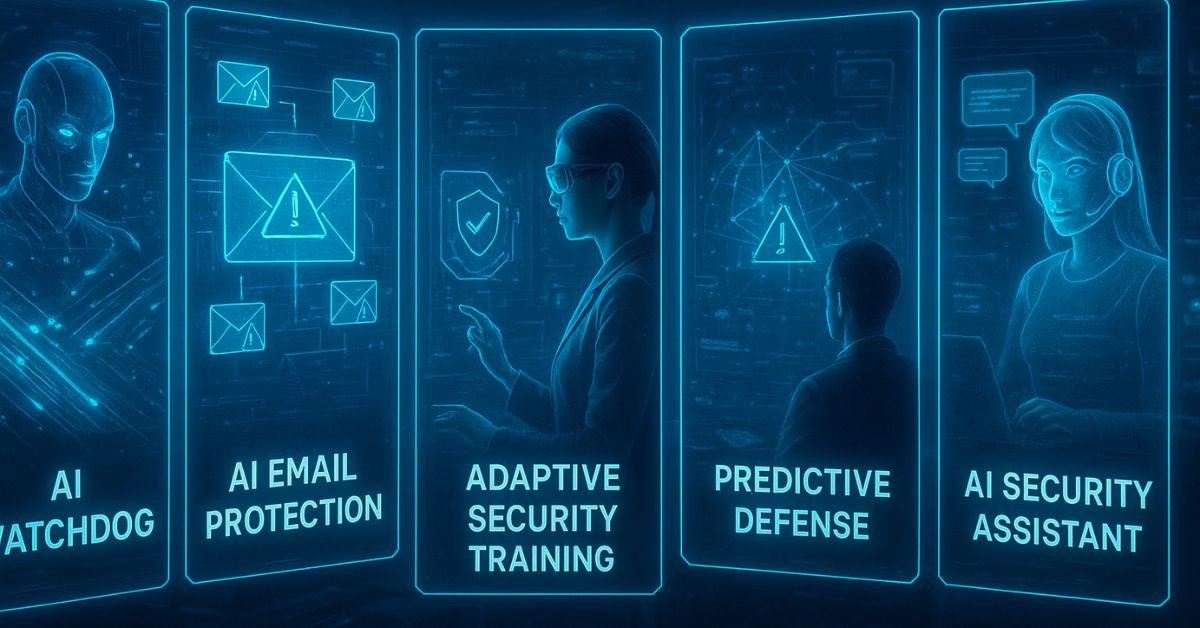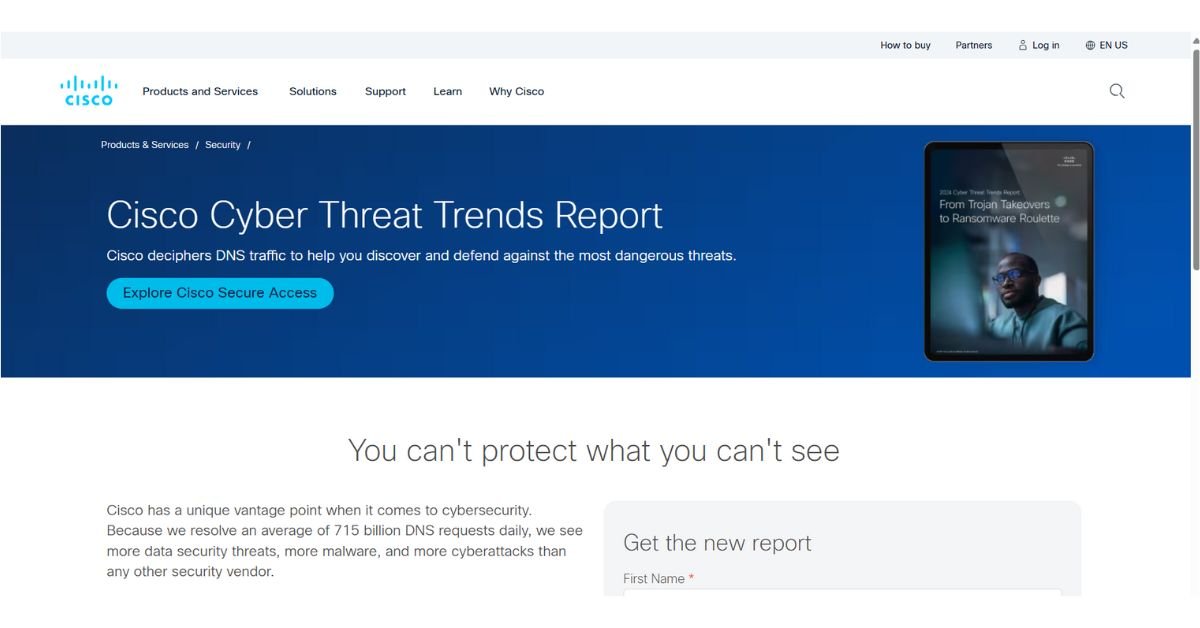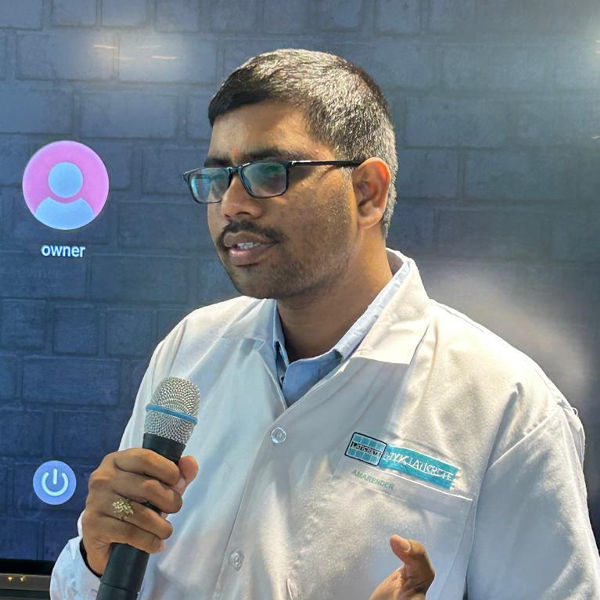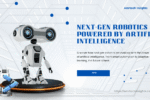Imagine a scenario where hackers have already initiated half a million new cyberattacks across the globe before you’ve even had your morning coffee on Monday. Does it terrify you? The bright side is that AI revolutionizing cybersecurity awareness is helping protect us at a rate quicker than new dangers are appearing.
People who aren’t IT specialists can use artificial intelligence in 2025. Artificial intelligence is becoming the invisible shield that stops phishing emails before they reach you.
- Teaches workers about risks as they happen.
- Predicts assaults before they happen

This is an example image that was created using AI; it does not represent any actual SOC or company.
I’ve worked with security teams in many different fields, and the change I’m seeing is amazing. Last month, an AI system at a mid-sized bank found and stopped a complicated attack that would have gone unreported for weeks before.
This book will explain everything in simple terms, whether you’re a small business owner, an IT professional, or just someone who wants to keep safe online. You don’t need a technical degree to understand it!
Part 1: AI Cybersecurity Basics-Your Digital Bodyguard
Could you please clarify what AI cybersecurity entails?
Machine learning, which is a kind of AI, is used in AI cybersecurity to:
- Find out what normal network traffic looks like.
- Look for strange behavior that could mean an attack.
- Automatically respond to threats.
- Imagine a security camera that can identify intruders and notify the authorities before they attempt to break in.
Key Terms: Made Simple
- AI that learns and becomes better over time is called machine learning.
- Phishing refers to emails that are not authentic and aim to obtain your personal information.
- EDR stands for “Endpoint Detection and Response.” It means watching devices for threats.
- SOAR: Security automation that speeds up responses
Part 2: Five Ways AI Is Making Cybersecurity Better Right Now
1. The watchdog is always on the lookout for hazards.
How it works:
- AI looks at network traffic all the time.
- Finds things that people might miss
- AI completes the task in less than a second.
In 2025, a healthcare company’s artificial intelligence discovered that a nurse’s account was accessing patient records at 3 AM, an unusual time given her shift pattern. The immediate freezing of the account prevented a hacker who had obtained her login credentials from proceeding.
Why it matters:
- Without AI, it takes an average of 197 days for an organization to find a breach. With AI? In most cases, it takes only a few minutes.
2. Better Phishing Protection -Your Email Bodyguard in AI Revolutionizing Cybersecurity Awareness
Breakthroughs in 2025:
- AI can now read emails like a person would.
- Finds little hints, like small modifications to logos
- Every day, AI discovers new methods to deceive people.
- Case Study: An AI system at a construction company caught a bogus “invoice” scam that flawlessly copied the writing style of their
- The chief executive officer stated, “Conventional filters would have overlooked this.”
- Pro Tip: Always double-check the email addresses of senders, even if they are AI!

Screenshot for educational purposes only; all trademarks and UI elements belong to their respective owners
Based on my review of the Cisco interface, here is what I gathered:
- Quicker identification and response are made possible by real-time threat updates.
- You can see exactly where dangers are coming from in the attack globe map view.
- Sorting problems according to their kind and level of severity makes them easier to prioritize.
- Particularly helpful for smaller security teams are the actionable next steps that are provided for each threat.
3. Adaptive Security Training: Learning That Stays -AI Revolutionizing Cybersecurity Awareness
The Issue:
- Training methods from the past, such as boring yearly presentations, are often forgotten by people.
- Keeps an eye on how staff do their jobs.
- It immediately delivers personalized lessons to you.
- Using simulations makes training more engaging.
- Companies that use AI training make 80% fewer security mistakes.
4. Predictive Defense: Stopping attacks before they happen
How to Make Predictions:
- AI looks at thousands of attacks that have happened in the past.
- Sees patterns that are starting to form
- Updates defenses ahead of time
In 2025, AI revolutionizing cybersecurity awareness detected attacks on retail POS systems and predicted that restaurants would be the next target. It was ready when they came.
5. AI Security Assistants: 24/7 Support Driving AI Revolutionizing Cybersecurity Awareness
Chatbots these days can:
- Answer security questions right away.
- Help you get through breaches.
- Write reports about what happened.
Game Changer: Small firms can now acquire insurance at pricing that is good for big businesses.
Section 3: Putting AI Security into Place
First Steps in AI Cybersecurity Awareness
- Turn on AI features in your antivirus software.
- AI password managers are useful.
- Try free tools like Microsoft Security Copilot.
For Businesses:
- Begin with filtering emails with AI.
- Add endpoint detection, like what CrowdStrike does.
- Think about systems for training AI.
- The cost of basic AI security today is less than $5 per user each month, which is lower than the cost of a data breach!
Section 4: Things You Shouldn’t Do When Embracing AI Revolutionizing Cybersecurity Awareness
“Set It and Forget It” Way of Thinking
- People need to periodically check AI.
- Not giving employees training
- AI cannot correct mistakes made by careless clicks.
- Not paying attention to updates
- Every few months, new AI models come forth.
- A store went six months without updating its AI, which meant that their system missed a new phishing method that lost them $200,000.
Your Action Plan: The End
AI isn’t taking the place of people; it’s giving us superpowers.
Here’s how to get started:
Today:
- Enable AI elements in the security tools you already have.
This Week:
- Try out one AI security product (many let you try them for free).
This Month:
- Set up an AI security checkup.
Remember that in 2025, AI revolutionizing cybersecurity awareness isn’t about working harder; it’s about working smarter with AI as your partner.
“The best defense is a mix of AI’s speed and human wisdom.” We can’t be stopped when we’re together.
Free Stuff:
- The AI Security Guidelines from CISA
- Google’s Blog about AI Security
- The AI Threat Database from MITRE
Disclaimer: All images used in this blog are conceptual, AI-generated, or sourced from the web for illustrative purposes. Real-time project images are confidential or unavailable.
Last updated: August 10, 2025

Hi, I’m Amarender Akupathni — founder of Amrtech Insights and a tech enthusiast passionate about AI and innovation. With 10+ years in science and R&D, I simplify complex technologies to help others stay ahead in the digital era.



